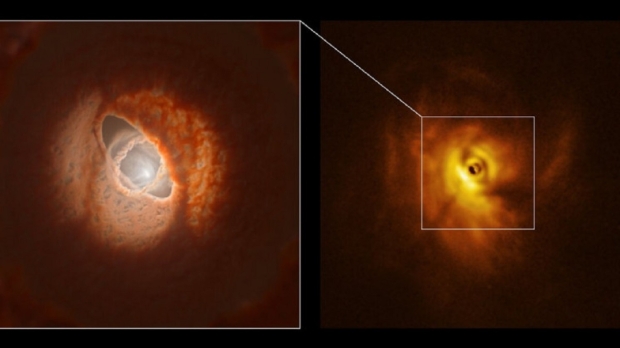1,300 light-years from where you’re reading this (give or take a few miles) astronomers have discovered an extremely unusual star system with a planet that orbits not one or two, but three stars. It all began with a team of astronomers using the European Southern Observatory’s Very Large Telescope (ESO’s VLT) and the Atacama Large Millimeter/submillimeter Array (ALMA) began to look at the star GW Orionis and its extremely unusual three-star arrangement with a fractured, deformed disc of planetary material orbiting it in an amorphous shape.

Stefan Kraus, a professor of astrophysics at the University of Exeter in the UK who led the research published today in the journal Science wrote that “Our images reveal an extreme case where the disc is not flat at all, but is warped and has a misaligned ring that has broken away from the disc,” Needless to say that struck him and the other researchers as more than a little odd.

In an ESO press release, the team explained,
“Their simulations showed that the misalignment in the orbits of the three stars could cause the disc around them to break into distinct rings, which is exactly what they see in their observations. The observed shape of the inner ring also matches predictions from numerical simulations on how the disc would tear.”
The Missing Piece: A Planet With Three Suns
It seemed a mystery as to why the misalignment in the orbits would create the distinct ring structure they were seeing. But a team using the ALMA believe they identified the necessary missing ingredient that would create this beautiful and mysterious gravitational system.
Jiaqing Bi of the University of Victoria in Canada who led a study of GW Orionis wrote
“We think that the presence of a planet between these rings is needed to explain why the disc tore apart,”

His team identified three dust rings in the ALMA observations, with the outermost ring being the largest ever observed in planet-forming discs. The researchers wrote that they believe future observations with ESO’s ELT and other telescopes “may help astronomers fully unravel the nature of GW Orionis and reveal young planets forming around its three stars.”




